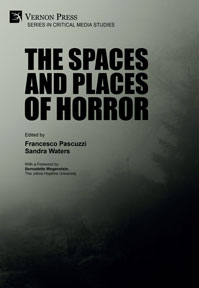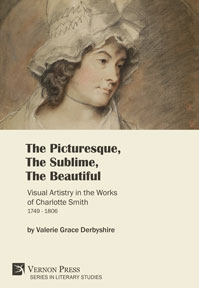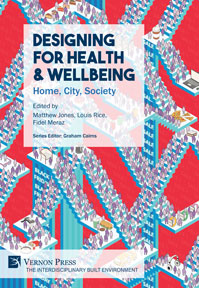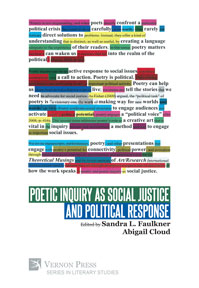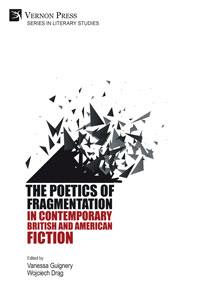Search
Browse
by Publication status
by Subject
Anthropology (26) Art (171) Business and Finance (38) Cognitive Science and Psychology (63) Communication and Journalism (51) Economics (116) Education (71) History (168) Human Geography (23) Interdisciplinary (43) Language and Linguistics (178) Law (16) Music Studies (18) Philosophy (222) Political Science and International Relations (127) Sociology (402) Statistics and Quantitative Methods (21)by Series
Series in Literary Studies (62) Series in Philosophy (57) Series in Education (49) Series in Sociology (42) Series in World History (31) Series in Politics (30) Bridging Languages and Scholarship (25) Series in Language and Linguistics (25) Cognitive Science and Psychology (20) Series in Philosophy of Religion (20) Series in American History (19) Series in Art (19) Critical Perspectives on Social Science (16) Series in Cinema and Culture (16) Curating and Interpreting Culture (15) Series on the History of Art (14) Series in Anthropology (13) Series in Critical Media Studies (13) Economics (13) Series in Business and Finance (12) Series in Music (12) Series in Performing Arts (9) Philosophy of Personalism (8) Series in Communication (8) Series in Law (8) Series in Economic Methodology (7) Series on Climate Change and Society (7) Classics in Economics (6) Series in Economic Development (6) Women's Studies (6) Philosophy of Forgiveness (5) Series in Built Environment (5) Series in Economic History (5) Series in Philosophy of Science (4) Series in Social Equality and Justice (4) Series on the History of Science (4) Serie en Sociología (3) Series in Contemporary History (3) Series in Creative Writing Studies (3) Series in Design (3) The Interdisciplinary Built Environment (3) Series in Heritage Studies (2) Series in Innovation Studies (2) Serie en Ciencias Políticas (1) Serie en Comunicación y Medios (1) Serie en Entorno Construido (1) Serie en Estudios Culturales (1) Serie En Estudios Literarios (1) Serie en Filosofía (1) Serie en Música (1) Series in Classical Studies (1) Series in Economics of Technological Change (1) Series in Philosophy of Race (1) Series in Urban Studies (1)by Language
English Spanishby Author
Browsing with filters

The Spaces and Places of Horror
Edited by
Francesco Pascuzzi, Rutgers University
and Sandra Waters, Rutgers University
Availability: In stock
299pp. ¦ $64 £48 €55
This volume explores the complex horizon of landscapes in horror film culture to better understand the use that the genre makes of settings, locations, spaces, and places, be they physical, imagined, or altogether imaginary. In The Philosophy of Horror, Noël Carroll discusses the “geography” of horror as often situating the filmic genre in liminal spaces as a means to displace the narrative away from commonly accepted social structures: this use of space is meant to trigger the audience’s innate fear of the unknown. This notion recalls Freud’s theorization of the uncanny, as it is centered on recognizable locations outside of the Lacanian symbolic order. In some instances, a location may act as one of the describing characteristics of evil itself: In A Nightmare on Elm Street teenagers fall asleep only to be dragged from their bedrooms into Freddy Krueger’s labyrinthine lair, an inescapable boiler room that enhances Freddie’s powers and makes him invincible. In other scenarios, the action may take place in a distant, little-known country to isolate characters (Roth’s Hostel films), or as a way to mythicize the very origin of evil (Bava’s Black Sunday). Finally, anxieties related to the encroaching presence of technology in our lives may give rise to postmodern narratives of loneliness and disconnect at the crossing between virtual and real places: in Kurosawa’s Pulse, the internet acts as a gateway between the living and spirit worlds, creating an oneiric realm where the living vanish and ghosts move to replace them. This suggestive topic begs to be further investigated; this volume represents a crucial addition to the scholarship on horror film culture by adopting a transnational, comparative approach to the analysis of formal and narrative concerns specific to the genre by considering some of the most popular titles in horror film culture alongside lesser-known works for which this anthology represents the first piece of relevant scholarship.
The Picturesque, The Sublime, The Beautiful: Visual Artistry in the Works of Charlotte Smith (1749-1806)
Valerie Derbyshire, University of Sheffield
Availability: In stock
316pp. ¦ $63 £48 €54
This book considers the relationships between British Romantic-era novelist, poet and writer of educational works for children, Charlotte Smith (1749-1806), and a number of visual artists of the eighteenth century with whom she had connections. By exploring these associations with artists such as George Smith of Chichester, George Romney, James Northcote, John Raphael Smith and Emma Smith, the book demonstrates how the artwork of these individual artists influenced Charlotte Smith’s literary corpus. It also shows a mutual influence: how the literary works of Charlotte Smith impacted the corpora of these artists. This study uncovers information which was not heretofore known regarding these artists: it reveals a mistaken attribution of a sketch which accompanied the second volume of Smith’s Elegiac Sonnets (1797) and sheds light on a print, held by the British Museum, which was previously shrouded in mystery. The artworks also enhance the existing scholarly knowledge about Smith’s biography. This book analyses the tropes and motifs employed by Smith’s artist-associates in the context of the popular aesthetics of the period and undertakes parallel readings between such visual artistry and Smith’s literary works. The book deliberates on how Smith utilises these aesthetics as narrative devices, making use of the tropes of the picturesque, the sublime and the beautiful, as well as that of a national British heraldic artwork, in order to produce and enhance meaning in her literary oeuvre. Thus, Smith uses aesthetic structures as vehicles for social critique, commentating on political, gender, moral and class concerns in addition to enhancing the perceived authenticity of her own artistry. The scholarship aims to correct the common misperception that Smith was a lonely marginal figure of Romanticism and instead asserts her central position in an enormous network of key artistic figures of British Romanticism.
Designing for Health & Wellbeing: Home, City, Society
Edited by
Matthew Jones, Birmingham City University et al.
Availability: In stock
290pp. ¦ $63 £47 €54
Rapid urbanization represents major threats and challenges to personal and public health. The World Health Organisation identifies the ‘urban health threat’ as three-fold: infectious diseases, non-communicable diseases; and violence and injury from, amongst other things, road traffic. Within this tripartite structure of health issues in the built environment, there are multiple individual issues affecting both the developed and the developing worlds and the global north and south. Reflecting on a broad set of interrelated concerns about health and the design of the places we inhabit, this book seeks to better understand the interconnectedness and potential solutions to the problems associated with health and the built environment. Divided into three key themes: home, city, and society, each section presents a number of research chapters that explore global processes, transformative praxis and emergent trends in architecture, urban design and healthy city research. Drawing together practicing architects, academics, scholars, public health professional and activists from around the world to provide perspectives on design for health, this book includes emerging research on: healthy homes, walkable cities, design for ageing, dementia and the built environment, health equality and urban poverty, community health services, neighbourhood support and wellbeing, urban sanitation and communicable disease, the role of transport infrastructures and government policy, and the cost implications of ‘unhealthy’ cities etc. To that end, this book examines alternative and radical ways of practicing architecture and the re-imagining of the profession of architecture through a lens of human health.
Poetic Inquiry as Social Justice and Political Response
Edited by
Sandra L. Faulkner, Bowling Green State University, USA
and Abigail Cloud, Bowling Green State University, USA
Availability: In stock
266pp. ¦ $59 £44 €50
This volume speaks to the use of poetry in critical qualitative research and practice focused on social justice. In this collection, poetry is a response, a call to action, agitation, and a frame for future social justice work. The authors engage with poetry’s potential for connectivity, political power, and evocation through methodological, theoretical, performative, and empirical work. The poet-researchers consider questions of how poetry and Poetic Inquiry can be a response to political and social events, be used as a pedagogical tool to critique inequitable social structures, and how Poetic Inquiry speaks to our local identities and politics. The authors answer the question: “What spaces can poetry create for dialogue about critical awareness, social justice, and re-visioning of social, cultural, and political worlds?” This volume adds to the growing body of Poetic Inquiry through the demonstration of poetry as political action, response, and reflective practice. We hope this collection inspires you to write and engage with political poetry to realize the power of poetry as political action, response, and reflective practice.
The Poetics of Fragmentation in Contemporary British and American Fiction
Edited by
Vanessa Guignery, École Normale Supérieure de Lyon, France
and Wojciech Drąg, University of Wrocław, Poland
Availability: In stock
252pp. ¦ $61 £46 €52
The last decades have seen a revival of fragmentation in British and American works of fiction that deny linearity, coherence and continuity in favour of disruption, gaps and fissures. Authors such as Ali Smith, David Mitchell and David Shields have sought new ways of representing our global, media-saturated contemporary experience which differ from modernist and postmodernist experimentations from which the writers nevertheless draw inspiration. This volume aims to investigate some of the most important contributions to fragmentary literature from British and American writers since the 1990s, with a particular emphasis on texts released in the twenty-first century. The chapters within examine whether contemporary forms of literary fragmentation constitute a return to the modernist episteme or the fragmented literature of exhaustion of the 1960s, mark a continuity with postmodernist aesthetics or signal a deviation from past models and an attempt to reflect today’s accelerated culture of social media and over-communication. Contributors theorise and classify literary fragments, examine the relationship between fragmentation and the Zeitgeist (influenced by globalisation, media saturation and social networks), analyse the mechanics of multimodal and multimedial fictions, and consider the capacity of literary fragmentation to represent personal or collective trauma and to address ethical concerns. They also investigate the ways in which the architecture of the printed book is destabilised and how aesthetic processes involving fragmentation, bricolage and/or collage raise ontological, ethical and epistemological questions about the globalised contemporary world we live in and its relation to the self and the other. Besides the aforementioned authors, the volume makes reference to the works of J. G. Ballard, Julian Barnes, Mark Z. Danielewski, David Markson, Jonathan Safran Foer, David Foster Wallace, Jeanette Winterson and several others.

